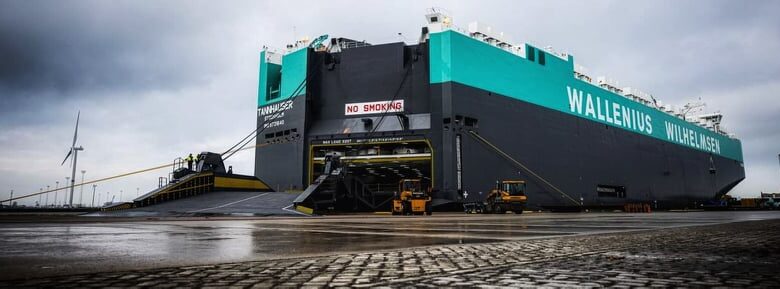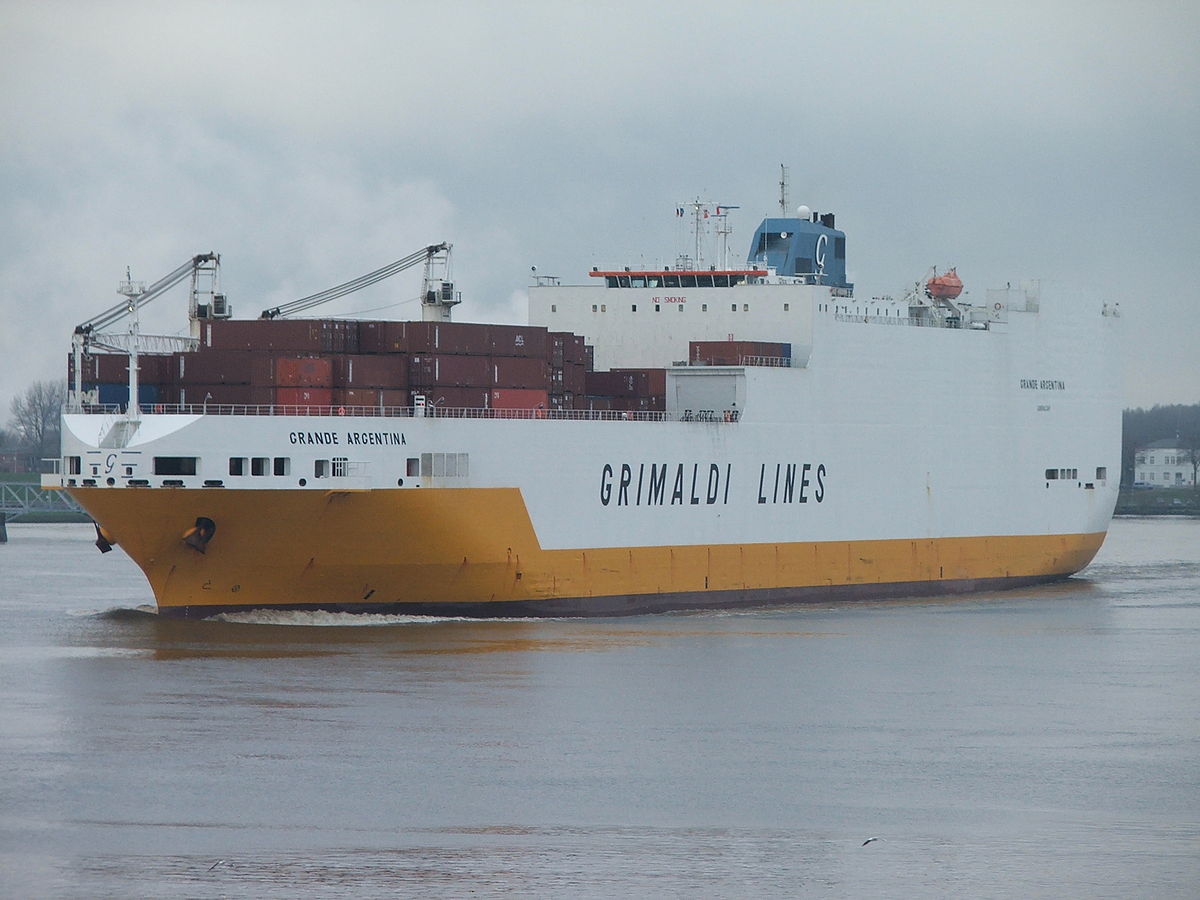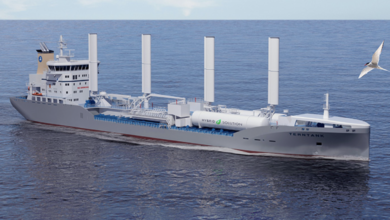What is RoRo (Roll on/off) ?

RoRo (Roll on/off), LoLo (Lift on/off), or via container carriers are the three principal modes of shipping to choose from when shipping bulk cargo across an ocean.
What is break bulk cargo? Break bulk cargo is non-containerized and usually transported in individual pieces due to cargo often being over-sized and overweight.
This means that freight containers cannot accommodate the cargo. Cargo includes goods such as construction equipment, oil and gas equipment, windmills, yachts or steel and is typically complicated to move from A to B.
Depending on the cargo and the specific projects, forwarders have the choice between RoRo and LoLo for such cargo types. How would you decide between the two methods? Read this article and never mix up RoRo and LoLo again!
RoRo stands for ROLL-ON/ROLL-OFF and means that specially designed ships for carrying wheeled cargo, such as cars, trucks, semi-trailer trucks, trailers, and railroad cars can drive on and off of the ship on their own wheels through a vehicle platform.
Elsewhere in the shipping industry, cargo is normally measured by metric tonnes, but RoRo cargo is typically measured in lanes in metres (LIMs).
We arrive to these figures by multiplying the length and the breadth of the load paths (where the vehicles are stacked) by the totality of decks in the vessel. Alongside this civilian usage, RoRo vessels are also utilized and incorporated in the naval sector to transport important naval freight.
RoRo is short for ‘Roll-on, Roll-off’, which describes how products are loaded and discharged from a vessel
RoRo allows your products to roll on and off the vessel, as opposed to being lifted onboard using cranes. Self-propelled products, such as cars and tractors, roll on and off the vessel on their own wheels.
Products that are not self-propelled are placed on handling equipment with wheels in the terminal to be rolled on and off the vessel. Your product thus remains on the handling equipment for the entire sea voyage.

WW Ocean’s RoRo vessels are designed to transport a range of products from auto and rolling equipment to breakbulk cargo. A RoRo vessel have up to 13 decks, and it works like a car park with liftable ramps connecting the decks.
Your products are placed onto the most appropriate deck, depending on their weight, height and length, and safely secured with lashings.
Why do shippers use RoRo?

Because the cargo stays in the boat until reaching the desired destination and is subsequently rolled off the boat, it is definitely safer than lifting on/off the ship. However, the main advantage is time-saving! Rolling cargo on board a vessel is faster than lifting it with a crane.
Shippers tend to prefer this method especially in cases where high-value-added products are transported. With shipping companies investing in faster and more reliable ships, the gap between the two methods even increases in favor of RoRo. Another benefit is that RoRo is simply easier and requires a less sophisticated logistics chain.
Different RoRo Types explained
There are multiple different types of RoRo which have been developed over the years due to technological advancements with the purpose to cover the transportation needs.
Pure Car (and Truck Carrier) RoRo Ships

A PCC (Pure Car Carrier) is a kind of RoRo ship which transports only cars; whereas a PCTC (Pure Car and Truck Carrier) transports not only cars but also trucks and other variations of four-wheeled vehicles. These kinds of vessels are quite large and quite conspicuous while on the water, along with being quite sturdy. They are mainly used in the delivering of newer vehicles to their required exporting destination.
Container Vessel + RoRo (ConRo) Ship

RoRo vessels that combine the features of both a traditional container vessel and a RoRo ship are referred to as ConRo. These vessels’ interiors are distributed in such a way that both of their loads are evenly distributed and balanced. The maximum load that is carried by these vessels is between 20,000 and over 50,000 deadweight tonnes (DWT).
General Cargo + RoRo Ship (GenRo) Ships

A normal cargo-carrying vessel equipped with the RoRo facility is termed as the GenRo. Slightly more compact and smaller as compared to the previous two categorizations, the GenRo is capable of carrying loads with approximate DWTs from 2,000 to almost 30,000.
RoPax Vessels

RoPax is the reference given to a car carrying vehicle that also provides for voyagers living aboard the vessel. RoPax though is mainly used as a technical term, and these vessels are commonly referred to as ferries that transport vehicles and passengers across river docks.
Complete RoRo Ships
A Complete RoRo vessel is a kind of car carrier that is constructed with inclines both on its insides as well as on the outside. The vessel doesn’t have any hatchways and is used mainly in the high seas. They are self-contained and are capable of lading anywhere from 2,000 to around 40,000 deadweight tonnes
Avoid hidden costs with RoRo
Container and LoLo shipping can come with additional hidden costs. While attractive low rates might draw in customers initially, taking a holistic view of the total outbound supply chain cost is vital.













